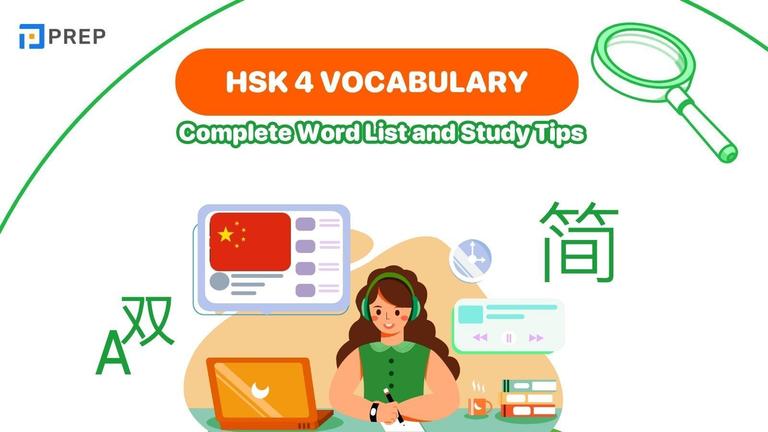Mastering Noun Phrases: A Concise Guide to Understanding and Using Them Effectively
Noun phrases represent fundamental building blocks of effective expression in English, serving as powerful vehicles for precision and nuance. The content delves into these linguistic structures through a methodical analysis of their composition, syntactic roles, identification methods, and common usage challenges. At their core, noun phrases revolve around a central head noun, enhanced by an ecosystem of determiners, adjectives, and modifiers that collectively function as a single grammatical unit within sentences.
- I. Unpacking Noun Phrases: Core Definitions and Essential Importance
- II. The Power of Noun Phrases: Their Functions Within Sentences
- III. Simple Techniques for Identifying Noun Phrases
- IV. Tips for Clarity and Common Pitfalls to Avoid
- V. Noun Phrase FAQs: Answering Your Key Questions
- VI. Wrap-Up: Embracing the Power of Noun Phrases
I. Unpacking Noun Phrases: Core Definitions and Essential Importance
The foundation of effective writing lies in understanding how to construct and manipulate noun phrases—the workhorses of your sentences that carry substantial meaning in compact form. These versatile structures appear in virtually every sentence you write or speak, making them essential components to master.
The foundation of effective writing lies in understanding how to construct and manipulate noun phrases—the workhorses of your sentences that carry substantial meaning in compact form. These versatile structures appear in virtually every sentence you write or speak, making them essential components to master.
1. Defining the Noun Phrase: More Than Just a Single Word
A noun phrase is more than simply a standalone noun—it's a cohesive group of words functioning collectively as a noun within a sentence. This linguistic unit creates a chunk of meaning centered around a head noun, potentially accompanied by determiners, adjectives, and other modifiers that provide additional information.
Unlike a solitary noun, a noun phrase expands and enriches meaning by answering "who?" or "what?" with greater precision and detail. The noun phrase serves as a fundamental building block in constructing meaningful, nuanced communication.
2. Why Noun Phrases Matter: Elevating Your Writing with Detail and Precision
Mastering noun phrases transforms your writing from basic to sophisticated. When you employ noun phrases effectively, you gain the ability to convey complex ideas with remarkable precision. These linguistic structures allow you to add descriptive detail that makes your writing more vivid and engaging for readers.
Well-crafted noun phrases ensure clarity by specifying exactly which person, object, or concept you're discussing. By understanding how to construct and place noun phrases strategically, you elevate every sentence you write, creating prose that captures attention and communicates with impact.
Consider the difference between these two sentences:
-
"The dog barked"
-
"The neighbor's anxious German Shepherd barked throughout the stormy night."
The expanded noun phrase in the second example instantly creates a more vivid mental image and conveys significantly more information. When you deliberately craft your noun phrases, you control exactly what your reader sees and understands.
II. The Power of Noun Phrases: Their Functions Within Sentences
The true versatility of noun phrases becomes evident when we examine how they operate within sentences. Far from being one-dimensional, these linguistic structures can assume multiple grammatical roles, each contributing uniquely to your expression. Understanding these distinct functions gives you greater control over sentence construction and meaning.
1. Noun Phrases as Subjects: Identifying the "Doer"
Function: Identifies who or what performs the action
Position: Appears before the verb
Purpose: Establishes the sentence's focus
When a noun phrase functions as a subject, it identifies who or what performs the action in the sentence. The subject noun phrase appears before the verb and establishes the sentence's focus.
Examples:
-
"The talented young pianist won the competition."
-
"Those colorful autumn leaves rustled in the breeze."
Recognizing subject noun phrases helps you maintain proper sentence structure and ensures grammatical agreement with verbs.
2. Noun Phrases as Objects: Direct and Indirect Receivers of Action
Noun phrases frequently appear as objects in sentences, receiving the action of the verb in two primary ways:
|
Type of Object |
Answers the Question |
Example |
|
Direct Object |
What? or Whom? |
"The chef prepared an elaborate five-course meal." |
|
Indirect Object |
To whom? or For whom? |
"She gave her disappointed friend another chance." |
Understanding these object functions allows you to construct sentences with clear relationships between actions and their recipients.
3. Noun Phrases as Complements: Renaming or Describing Subjects
Noun phrases can serve as subject complements (also called predicate nominatives) when they follow linking verbs like "is," "was," "became," or "seems."
Key characteristics:
-
Follow linking verbs
-
Rename or describe the subject
-
Create equivalence between subject and complement
Example: "Her brother is a talented wildlife photographer."
This function creates equivalence between the subject and the complement noun phrase, allowing you to define or characterize the subject with precision and impact.
4. Noun Phrases as Objects of Prepositions: Completing Prepositional Ideas
When noun phrases follow prepositions, they function as objects of preposition, completing the prepositional phrase.
How it works:
-
A preposition begins the phrase ("under," "through," "beside," etc.)
-
The noun phrase completes the prepositional phrase
-
Together they establish relationships of direction, location, time, or manner
Examples:
-
"The cat hid under the old wooden bed."
-
"She walked through the bustling farmer's market."
These prepositional objects help establish relationships involving direction, location, time, or manner, adding crucial contextual information to your sentences.
III. Simple Techniques for Identifying Noun Phrases
Recognizing noun phrases in the wild requires a systematic approach. While experienced writers may identify these structures intuitively, having concrete strategies ensures you can consistently locate and analyze noun phrases in any context. These practical techniques will help you develop this critical skill without requiring advanced linguistic knowledge.
1. Locating the Head Noun as Your Starting Point
Begin identifying a noun phrase by finding its central element—the head noun. This core word establishes what the entire phrase fundamentally represents. Once you've identified this anchor point, you can then determine which surrounding words belong to the noun phrase by asking which elements modify or specify this central noun.
For instance, in the sentence "The ancient marble statue attracted many visitors," "statue" serves as the head noun, allowing you to recognize "The ancient marble statue" as the complete noun phrase.
2. Using the Pronoun Replacement Test for Verification
A practical method for confirming whether a group of words functions as a noun phrase is the pronoun replacement test. If you can substitute the word group with a pronoun (such as "it," "they," "he," or "she") while maintaining the sentence's grammatical integrity, you're dealing with a noun phrase.
Consider "The documentary about marine conservation won several awards." You can replace "The documentary about marine conservation" with "It" and still have a coherent sentence: "It won several awards." This verification confirms you've correctly identified the noun phrase.
This test works because pronouns are essentially stand-ins for noun phrases, not just individual nouns. When you replace "The tall woman in the blue dress" with "She," you're confirming that the entire description functions as a single grammatical unit. Practice this technique with increasingly complex sentences to sharpen your identification skills.
3. Spotting Common Markers like Determiners and Modifiers
Noun phrases often announce themselves through specific linguistic signals. Determiners—including articles (a, an, the), demonstratives (this, that, these, those), possessives (my, your, his), and quantifiers (some, many, few)—typically mark the beginning of a noun phrase. Additionally, adjectives, participles, and other modifiers clustering around a noun suggest you're looking at a noun phrase.
In "Those three remarkable historical buildings," the determiner "Those" signals the start of the noun phrase, with the modifiers "three," "remarkable," and "historical" all working together to describe the head noun "buildings."
Once you can confidently identify noun phrases, the next step is learning to use them effectively while avoiding common errors that can undermine your writing.
IV. Tips for Clarity and Common Pitfalls to Avoid
Even experienced writers can stumble when working with complex noun phrases. The challenge lies not merely in constructing them, but in using them precisely to enhance rather than obscure meaning. By recognizing these common trouble spots, you can navigate around them and ensure your noun phrases serve your communication goals effectively.
1. Ensuring Subject-Verb Agreement with Complex Noun Phrases
REMEMBER: The head noun controls verb agreement—not the modifiers or nouns in prepositional phrases.
When working with elaborate noun phrases as subjects, remember that verb agreement depends solely on the head noun, not on any modifiers or nouns within prepositional phrases.
✓ CORRECT: "The collection of ancient manuscripts requires careful preservation."
✗ INCORRECT: "The collection of ancient manuscripts require careful preservation."
The singular head noun "collection" governs the verb "requires," despite the plural "manuscripts" appearing nearby. By focusing on the head noun, you can avoid this common grammatical pitfall and maintain precision in your writing.
This rule becomes particularly important with noun phrases containing prepositional phrases like:
-
"of the students"
-
"with the executives"
-
"among the options"
In each case, the prepositional object (students, executives, options) may tempt you to match the verb to that noun rather than to the true subject—the head noun of the entire phrase. Train yourself to identify the head noun first, then ensure your verb agrees with it.
2. Avoiding Ambiguity: Dangling Modifiers and Misplaced Descriptions
Clarity suffers when modifiers within noun phrases are misplaced or left dangling.
Ambiguous Example:
"Walking through the forest, the ancient trees impressed the hikers."
Problem: The introductory phrase incorrectly suggests the trees were walking.
Clear Revision:
"Walking through the forest, the hikers were impressed by the ancient trees."
Similarly, in noun phrases themselves, modifier placement matters:
|
Phrasing |
Meaning |
|
"The man with a camera in the blue shirt" |
A man who has a camera and is wearing a blue shirt |
|
"The man in the blue shirt with a camera" |
A man in a blue shirt who has a camera (the camera isn't necessarily blue) |
Place modifiers thoughtfully to ensure your noun phrases communicate exactly what you intend.
3. Striving for Balance: Effective Detail Without Overburdening the Reader
While noun phrases allow you to pack substantial information into your sentences, balance remains crucial.
Compare these two approaches:
-
Overloaded noun phrase:
"The tall, elegant, nineteenth-century Victorian mansion with ornate gingerbread trim and newly painted shutters situated on the corner" -
Balanced noun phrase:
"The elegant Victorian mansion on the corner"
The first example overloads the reader with details, while the second provides sufficient information without becoming unwieldy.
Guidelines for balanced noun phrases:
-
Assess each modifier's necessity
-
Consider whether information is essential or supplementary
-
Divide information across multiple sentences when a noun phrase grows too complex
-
Ask yourself: "Does this detail enhance or obstruct understanding?"
Effective writing uses noun phrases to enhance clarity, not impede it.
V. Noun Phrase FAQs: Answering Your Key Questions
Even after thoroughly examining noun phrases, certain questions frequently arise as writers apply this knowledge to their work. These targeted answers address specific concerns that often emerge during the practical application of noun phrase principles. Understanding these nuances will help refine your grasp of these essential language structures.
1. What clearly separates a noun phrase from a basic noun?
A noun phrase contains a noun plus any associated modifiers, determiners, or complements functioning together as a single unit, while a basic noun stands alone as a single word identifying a person, place, thing, or concept without any accompanying descriptive elements.
2. Can a noun phrase sometimes be just one word (like a pronoun)?
Yes, a single pronoun can function as a complete noun phrase because pronouns inherently stand in for a noun and its implied modifiers. Words like "she," "they," and "it" operate as condensed noun phrases, carrying the full grammatical weight of the longer phrases they replace.
3. What are the essential categories of modifiers in a noun phrase?
The two primary categories of modifiers in noun phrases are pre-modifiers, which appear before the head noun (such as articles, adjectives, and possessives), and post-modifiers, which follow the head noun (including prepositional phrases, relative clauses, and participle phrases).
Pre-modifiers typically provide descriptive qualities or quantification, answering questions like "which one?" or "how many?" Post-modifiers often supply relational or contextual information, answering questions like "which specific one?" or "in what way?" Understanding this distinction helps you organize information effectively within your noun phrases.
4. How do noun phrases functioning as subjects differ from those as objects?
Noun phrases as subjects perform the action of the sentence and typically appear before the main verb, while noun phrases as objects receive the action and appear after the verb. Their form remains identical, but their sentence position and relationship to the verb differentiate their functions.
Having explored the fundamentals, functions, identification techniques, common pitfalls, and frequently asked questions about noun phrases, let's bring our discussion to a meaningful conclusion.
VI. Wrap-Up: Embracing the Power of Noun Phrases
Mastering noun phrases represents a significant advancement in your command of language. You've now explored their definition, components, functions, and effective usage—from subjects and objects to complements and prepositional objects.
The practical skills you've gained aren't merely academic—they'll elevate your communication by giving you greater control over precision and detail. As you continue developing as a writer:
-
Pay attention to how skilled authors use noun phrases in works you admire
-
Notice how they vary phrase length and complexity for rhythm and emphasis
-
Practice constructing your own with increasing sophistication
-
Remember that fluency develops through observation and deliberate practice
With this knowledge, you're well-positioned to craft more precise, vivid communication in all your writing. The humble noun phrase, when mastered, becomes one of your most powerful tools for expressing exactly what you mean.

Hi I'm Chloe, and I am currently serving as an Product Content Administrator at Prep Education. With over five years of experience in independent online IELTS study and exam preparation, I am confident in my ability to support learners in achieving their highest possible scores.
Comment
Premium content
View allPersonalized roadmap
Most read












